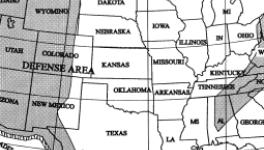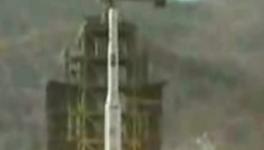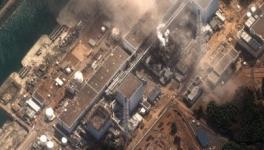Fukushima – The Crisis Continues
Tepco has now admitted what has been said by independent experts for quite some time. Its three running reactors that went into a crisis post the earthquake and tsunami, have all had fuel meltdowns and failure of their the primary containment. What it means that each of these reactors had their fuel rods melting and the fuel pellets falling down into the bottom of the containment vessel damaging it.
That the primary containment had been breached was obvious when large amounts of highly radio active water was found in various parts of the plant. Computer simulation has now shown that each of the three reactors have holes in their primary containment vessel through which radioactive water is leaking out.
Meanwhile Tepco has suffered a loss of $15.4 billion this fiscal year leading to its president, Masataka Shimizu, stating last Friday that he would resign to take responsibility for the crisis at the Fukushima plant. Meanwhile, it is estimated that the total compensation that nuclear accident may cause would amount to mammoth $100 billion or more. The question is who would bear this cost – the insurance companies, Tepco or the Japanese Government?
This also makes clear that how stupid is the provision in the current Indian Civil Nuclear Liability Act which has capped the operator's liability for any nuclear accident to a mere Rs.1,500 crore or $300 million. Contrast this with the actual damage -- $100 billion -- and the cost of the nuclear plants – approximately $10 billion each. By capping the operator's liability, the Government of India essentially is covering all the risks associated with a nuclear plant.
It is also clear that Tepco and the Japanese Government were suppressing the true status of the plant. It has taken them two and a half months to finally admit that all three affected reactors have suffered fuel meltdowns and have had their containment breached. There was enough evidence out there – the kind of radioactive material found, the high radioactive contamination of water, etc. -- for it to be obvious that fuel meltdowns and containment breach had taken place. As a consequence, the credibility of both Tepco and the Japanese Government have been seriously damaged. Very few people now trust what the Government or Tepco says about Fukushima any more, a fact also admitted by Prime Minister Naoto Kan in Parliament, "I am very sorry that the public doesn't trust the various disclosures the government has made about the accident."
What is the total quantum of radio activity release as compared to Chernobyl? The Japanese authorities had upgraded the Fukushima accident to Level 7, the same as Chernobyl some time back but had claimed that the radioactivity release was significantly lower than Chernobyl.
Chernobyl was an explosion in which the major part of the radioactive material in the reactor was strewn far and wide almost immediately. Fukushima has been a slow release as the containment has largely held. But unlike Chernobyl, the leak has not stopped and is taking place in 3 reactors instead of one in Chernobyl.
The containment having partially held has meant that the release to the atmosphere has been of the lighter and more volatile material – iodine and caesium. However, the major damage to health comes from these two elements. New Scientist reports,
“The Chernobyl accident emitted much more radioactivity and a wider diversity of radioactive elements than Fukushima Daiichi has so far, but it was iodine and caesium that caused most of the health risk – especially outside the immediate area of the Chernobyl plant”.
So how much iodine and caesium is leaked out of Fukushima? The organisation set up to verify the Comprehensive Nuclear-Test-Ban Treaty (CTBT) has a global network of air samplers that trace the origin of the radioactive elements released by atomic bomb blasts. It can also monitor the release from nuclear accidents. New Scientist reports that the details obtained from a number of such sampling stations show in the 10 days that Chernobyl fire burnt, the radio active iodine released by Chernobyl was only 50% more than Fukushima. Similarly, radioactive Caesium for the same period was 70% more. Though the radioactivity release may have tapered down, the total release of the more harmful elements from Fukushima is quite comparable to Chernobyl.
Apart from this, there is the other issue of radioactive water leaking into the sea and ground water. Once Tepco has admitted that the primary containment has been breached, it is clear that there is radioactive contamination of the water that has accumulated in the turbine basement and other areas. The cooling water being circulated through a temporary cooling system is also highly contaminated. How much of this is fully contained and how much is leaching into the groundwater and into the sea?
There is no clear answer to this question. Disquietingly, the Japanese authorities have reported,
“Radioactive Iodine and caesium have been detected in the seabed samples taken 15-20 km far from the plant from 15-20m deep. Level of radiation is 100 to 1,000 times above normal.”
All this would indicate that there is a still a serious problem of radioactive material leaking out from the containment vessels into ground and sea water.
To compound the problem, the Fukushima plant has nearly exhausted its storage capacity of radioactive water. It is now holding nearly 200,000 tonnes of such water. Considering that they have to pump in additional amount of water every day and then have to store it, they have either to recycle this water after filtering out the radioactive material or release it to the sea. While there are efforts being made to build a large barge mounted facility to recycle this water after filtering the radioactive materials, it is not yet ready. Therefore, we are likely to see a further release of radioactive water into the sea in the coming days.
The key issue before the Tepco and Japanese authorities is when can they pronounce the crisis to be officially over. For this to happen, the three reactors must be brought to a “cold-shut-down” status. Tepco had originally planned to do this by January 2012. However, this was based on a roadmap that did not envisage that the containment vessels have been damaged. The major change to the original roadmap issued a month ago is the way the reactors are to be cooled. TEPCO originally planned to fill the containment vessels with water before going on to install new cooling systems. After discovering the breach in the containment, it is now clear that filling the entire containment vessel would generate a huge amount of radioactive water and problems of storing it. The plan now is to decontaminate the water now stored in the plant or in the turbine basement and use it to cool the reactors.
Most experts think the original schedule that Tepco had prepared is not attainable. It will take at least another 9-12 months before the Fukushima crisis can be declared to be officially over. This would still leave the question open what to do with Fukushima and the 1700 tons of highly radioactive fuel that would still remain in Fukushima. A concrete burial of the type used in Chernobyl is not going to be easy as the fuel rods are being held in holding ponds at higher floors of the reactor building.
In these 9-12 months before the reactors come to a cold-shut-down stage, the crisis would still continue. The fuel in the reactor would still need to be cooled, the cooling system would need to pump water to the core and control and instruments in the plant would have to work to control the cooling process and monitor the state of the plant. In reactor buildings which have very high radioactivity levels, this is not going to be easy. Just one mistake can plunge the reactor back to a near meltdown state and further breach the containment. The problem becomes even more acute if we consider that the plant is already in a bad shape and all the equipment being used for cooling the reactor core is makeshift. This is compounded by the threat of any new earthquake – even a small earthquake can take down the makeshift cooling system plunging Fukushima back to a a new crisis. And let us not even think of a bigger earthquake.
The response of the Indian Government to the Fukushima crisis has been one of pretending everything is fine with the Indian nuclear plants. The Atomic Energy Commission (AEC) and Nuclear Power Corporation Limited (NPCL) have claimed that all Indian nuclear plants are safe even before conducting a safety survey, that the new designs of nuclear reactors being built by Areva are safe as they are based on older designs. Clearly, all this is to pre-empt any serious discussion on nuclear power in the country – either its costs or on safety related issues.
Let us take first the argument that all nuclear plants in the country are safe. Does this apply also to Tarapur? Some of the statements coming from the nuclear establishment have stated that Indian plants cannot have a Fukushima type disaster as they are Pressurised Heavy Water Reactors (PHWR) and not Boiling Water Reactors (BWR). Well, Tarapur is a BWR and is also well beyond its life span, which finished around 16 years back. It is known that GE and US authorities have informed the Indian Government privately of the risks of running Tarapur BWRs. In spite of this, AEC and NPCL have continued to run the BWRs there, knowing full well that these plants are unsafe. Post Fukushima, the country would like to know the status of the safety review that has been promised by the PM, particularly as the design of the Tarapur BWRs are even older than Fukushima.
Regarding the new designs from Areva, Westinghouse and GE being planned in Jaitapur, Nellore and other sites, again the concerned regulatory agencies in their home countries have yet to certify the safety of these reactors. Without a proper safety audit of the new designs, India and its people are being sought to be made guinea pigs for Areva and other US companies. Neither have the cost figures for the imported reactors been released. On the contrary, the Chairperson of Areva has stated in public that the figures for the Areva reactors have been kept 'confidential' at the behest of the Indian Government.
The PM has promised a new Bill to be introduced in the Parliament to separate AERB from AEC. If this is indeed done, it will be a belated though welcome recognition that safety and regulation needs to be separated and made independent of operations of nuclear plant. One will have to see the body of the Bill before we can comment on how much real or illusory powers would be vested with this new-look AERB. Without this separation, there is little credibility in the declaration of the safety of nuclear plants in India.
Get the latest reports & analysis with people's perspective on Protests, movements & deep analytical videos, discussions of the current affairs in your Telegram app. Subscribe to NewsClick's Telegram channel & get Real-Time updates on stories, as they get published on our website.
























